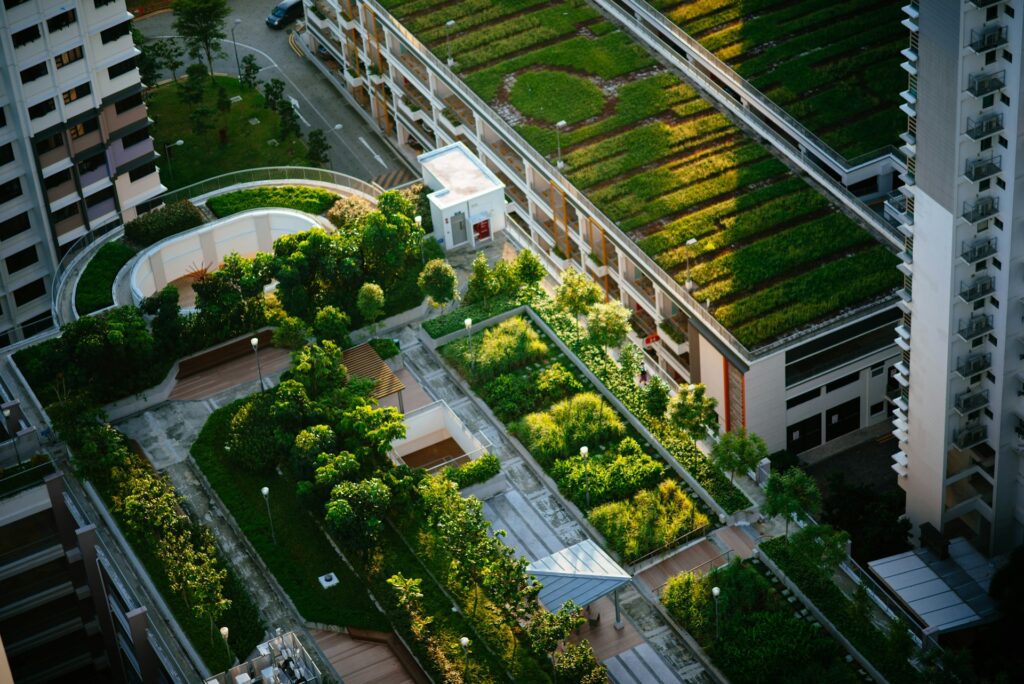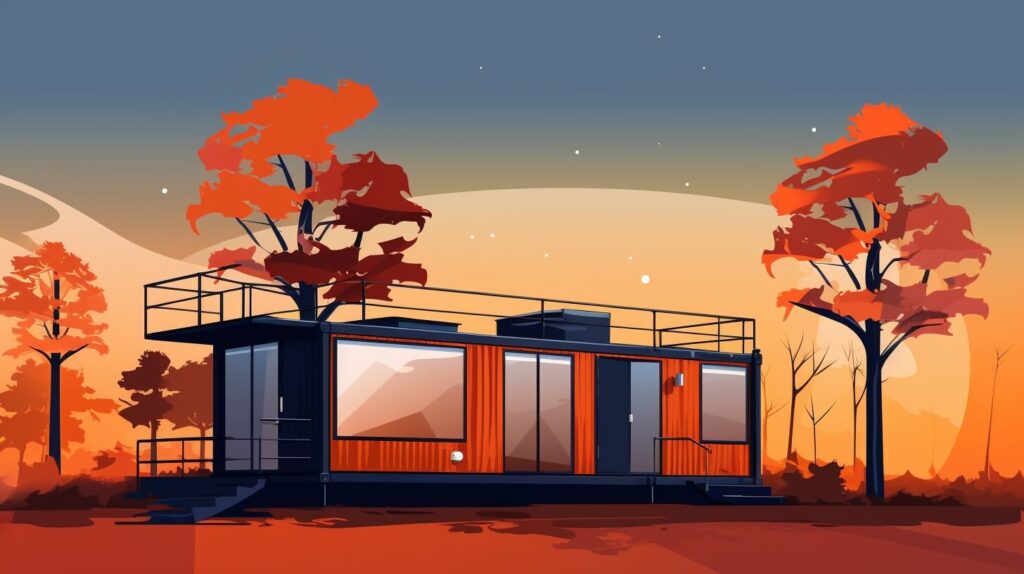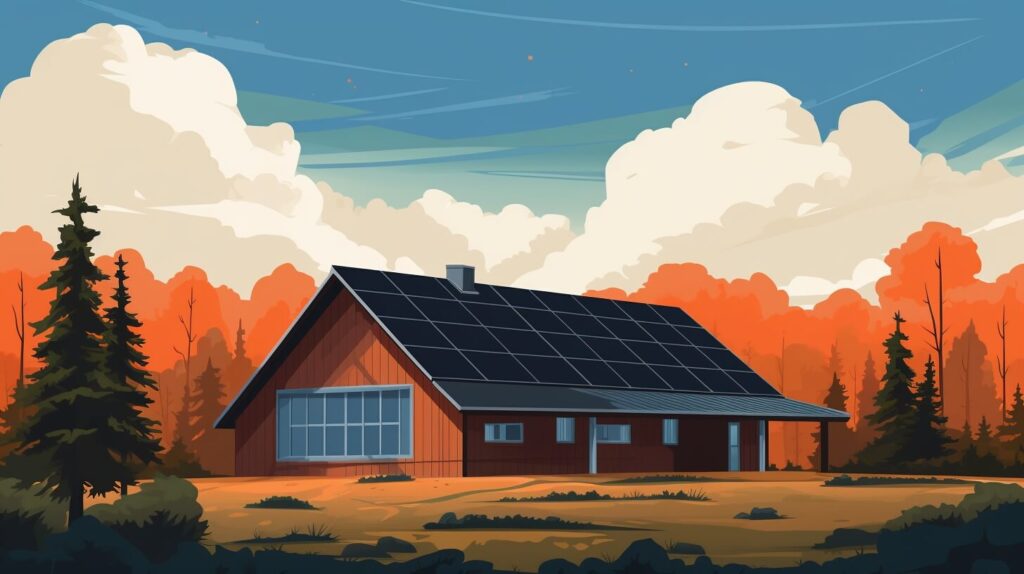
We are reader-supported. When you buy through links on our site, we may earn an affiliate commission.
Imagine stepping into a building where the structural beams themselves seem alive — warm, beautiful, spanning vast spaces and carrying more than just load, but carrying carbon and intention too. That’s glulam, or glue-laminated timber, and it’s rapidly becoming one of the most compelling tools in the sustainable designer’s kit.
What is Glulam?
Glulam is wood, but smarter. It’s an engineered wood product, made by bonding together multiple layers of structural-grade timber — often spruce or pine. The layers are bonded with moisture-resistant adhesives, with their grains aligned.
The result is light yet strong beams or columns that can be manufactured in long spans, curved shapes and large cross sections. It uses smaller trees, such as second-growth or plantation stock, making best use of the forest without needing old-growth trees.
Is glulam an asset to sustainable construction? In many ways, yes. Here’s why:
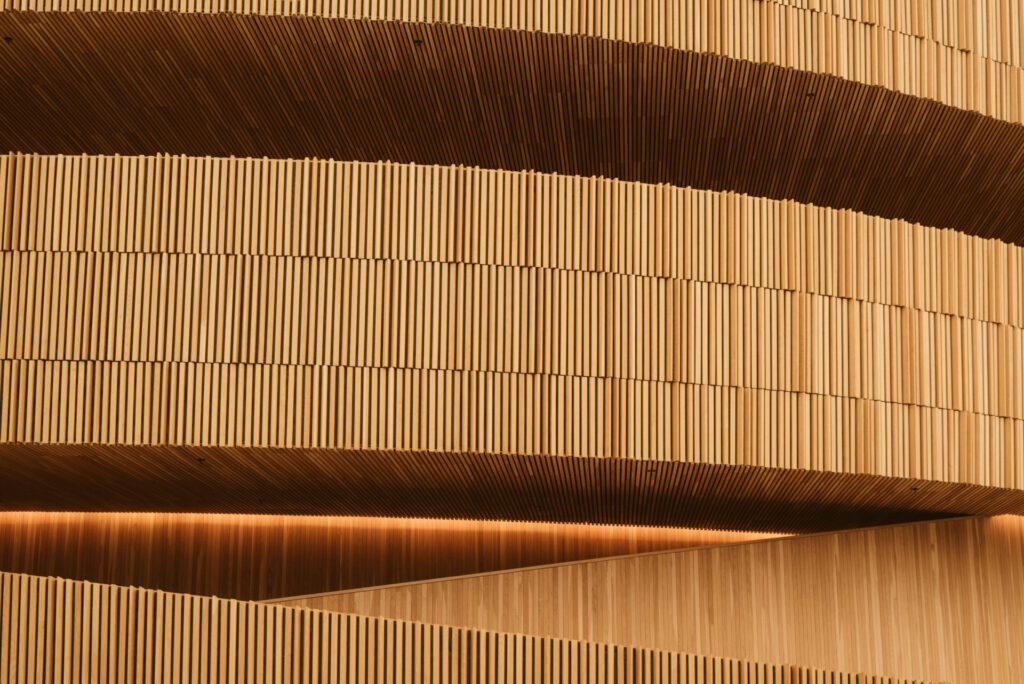
The Environmental Case — Low Carbon, High Value
Here’s where glulam really shines. Like all wood products, it naturally sequesters carbon, locking it in place when used for construction. The manufacturing process uses much less energy than steel or concrete. Some studies have found that the life cycle global warming potential of glulam structures may be up to 75% lower than steel or concrete structures.
Because glulam is lightweight, transport emissions are also lower and construction projects move faster. When sourced from sustainably managed forests, such as FSC or PEFC-certified sites, glulam is renewable. Timber residues from milling and construction waste can be reused or turned into bioenergy. In the Swedish glulam industry, for example, glulam’s drying using biogenic energy, off-cuts are recycled and even its protective film is recyclable.
Because glulam elements can be prefabricated with high precision, on-site waste is minimized, and construction times are shortened. This can play a significant role in the construction industry’s circular economy, as buildings can be designed to be easily taken apart.
Glulam in Some of the World’s Greenest Buildings
Across Scandinavia, North America and beyond, glulam has been the material of choice for some of the world’s most sustainable buildings.
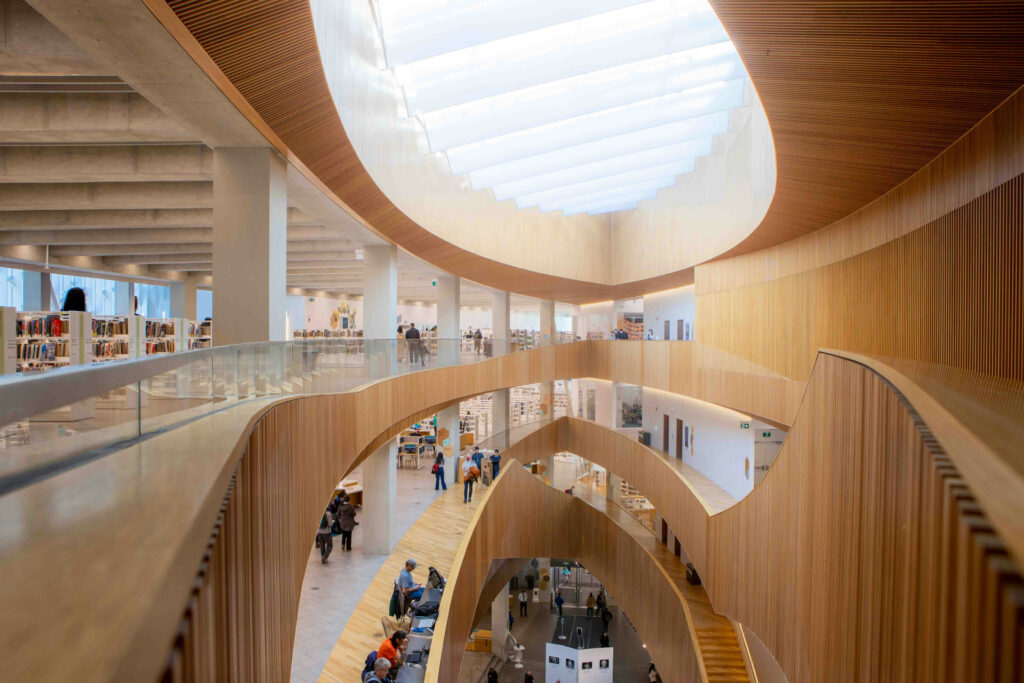
Mjøstårnet in Norway, completed in 2019, was at that time the world’s tallest timber skyscraper. It uses local glulam beams and columns in an 18-storey tower, locking in thousands of tonnes of CO2 while avoiding concrete entirely.
In London, New Wave House has a two-storey roof extension built entirely from Douglas-fir glulam. It was manufactured from glulam offcuts on-site in the building’s own ground-floor joinery, with zero timber waste. Energy use per square metre dropped by 25% despite a 40% increase in area, thanks also to passive ventilation in the building.
Stockholm’s Wood City masterplan is on track for full build-out by 2027, achieving up to 40% carbon reduction versus concrete methods and speeding construction dramatically — building around 1,000 square metres a week, twice as much as can be built in concrete. When complete, built with glulam and cross-laminated timber, it will be the world’s largest wood construction project, featuring housing, workspaces, restaurants and shops across 25 blocks.
Why Glulam Is a Strong Construction Choice
Alongside its environmental credentials, glulam has many advantages as a construction material, notably strength, beauty and speed.
Strength and Flexibility
Glulam can rival or exceed solids. It has a higher strength-to-weight ratio than steel in many situations. Large cross-sections can deliver spectacular spans and curves. It resists warping and splitting better than sawn lumber and its engineered consistency gives designers confidence.
Fire and Durability
All wood is combustible, but large-section glulam chars predictably, forming a protective outer layer that slows structural failure. This can outperform lightweight wood and even delay loss, compared to steel that softens under heat. Proper adhesives and design, along with routine inspection, help it endure for decades, with a typical lifespan of 50-75 years if moisture is controlled.
Aesthetics and Biophilia
Walk into a glulam-built space and you feel the difference, with natural light bouncing across warm, rich tones. It invites calm, improves indoor environmental quality and even enhances occupant well-being — qualities that concrete and steel struggle to replicate.
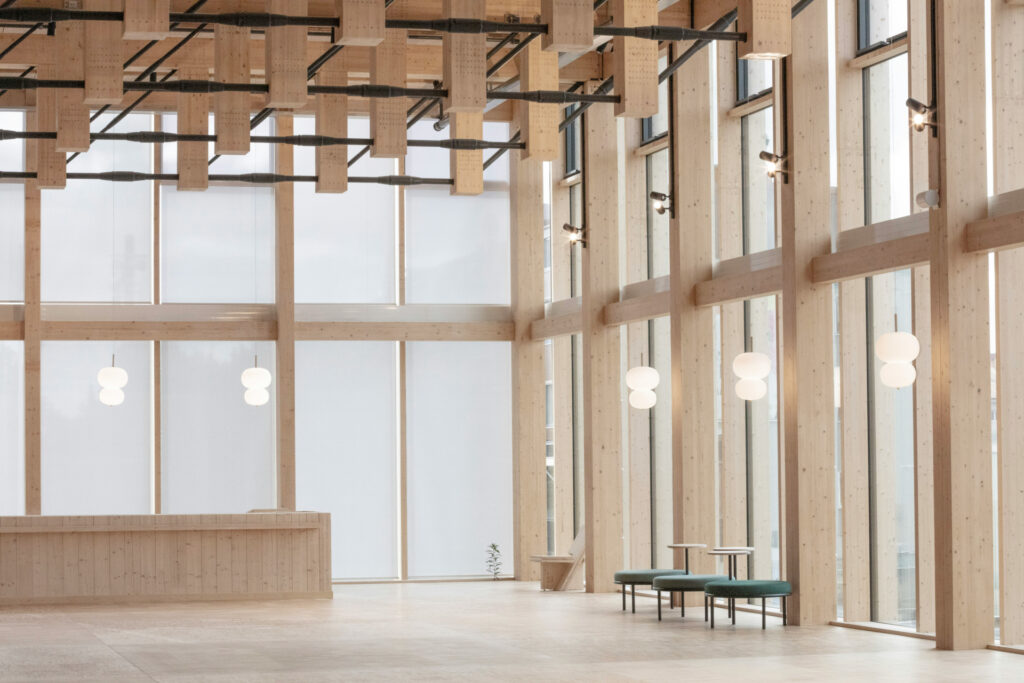
Construction Efficiency
Off-site prefabrication reduces on-site waste, speeds installation and minimizes disruptions. Projects report 25% faster build times — or even quicker. Because it is significantly lighter than concrete or steel, glulam buildings require less extensive foundations, which can save on costs and time. Additionally, with no waiting around for concrete to cure, electrical and plumbing work can get underway sooner.
Using glulam and other mass timber products can also considerably cut labor costs. Some projects require as few as one-quarter of the typical number of site workers.
Challenges With Using Glulam
Of course, as with any material, glulam does have some issues. As promising as glulam is, it is not a universal panacea.
Cost and Availability
Glulam often has a higher upfront cost than concrete, and supply may be limited in regions without glulam manufacturers. Importing beams would amplify both embodied emissions and prices.
Moisture and Decay Rates
Exposure to cycles of wet and dry conditions can reduce glulam’s bending strength — by up to 44%, according to one study. In humid or tropical climates, therefore, regular inspection and active maintenance will be critical.
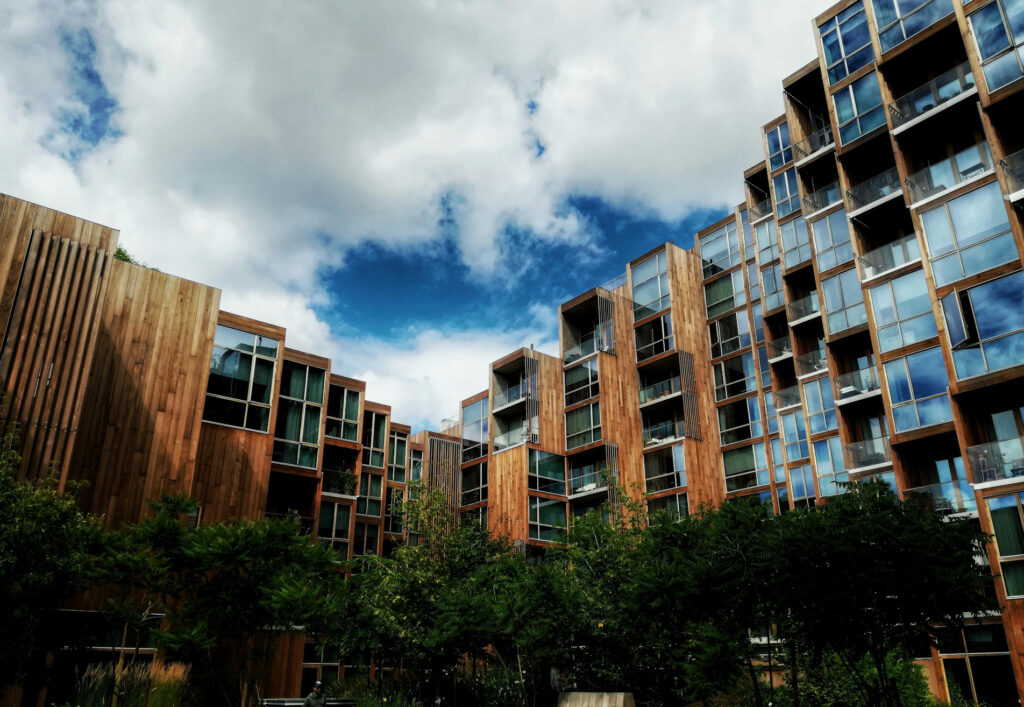
Scale and Code Limits
Some jurisdictions still restrict mass timber use in taller or multi-unit residential buildings due to historic fire safety concerns, acoustic limits or unfamiliarity. Regulatory updates are evolving but not universally, with many regions lagging behind.
A Nuanced Solution
So, taking into account the advantages and disadvantages of this material, is glulam an asset to sustainable construction?
The answer is yes — but with nuance.
Glulam shines when:
- Source forests are sustainably managed
- It replaces concrete or steel in structural roles
- Prefabrication cuts waste and speeds delivery
- End-of-life reuse or recycling is planned
- The climate is moderate and moisture is managed
Potential drawbacks occur when:
- Transport negates carbon gains
- Moisture risks are unmanaged
- Codes restrict glulam’s use in relevant building types
- Supply chain is constrained or project cost-sensitive
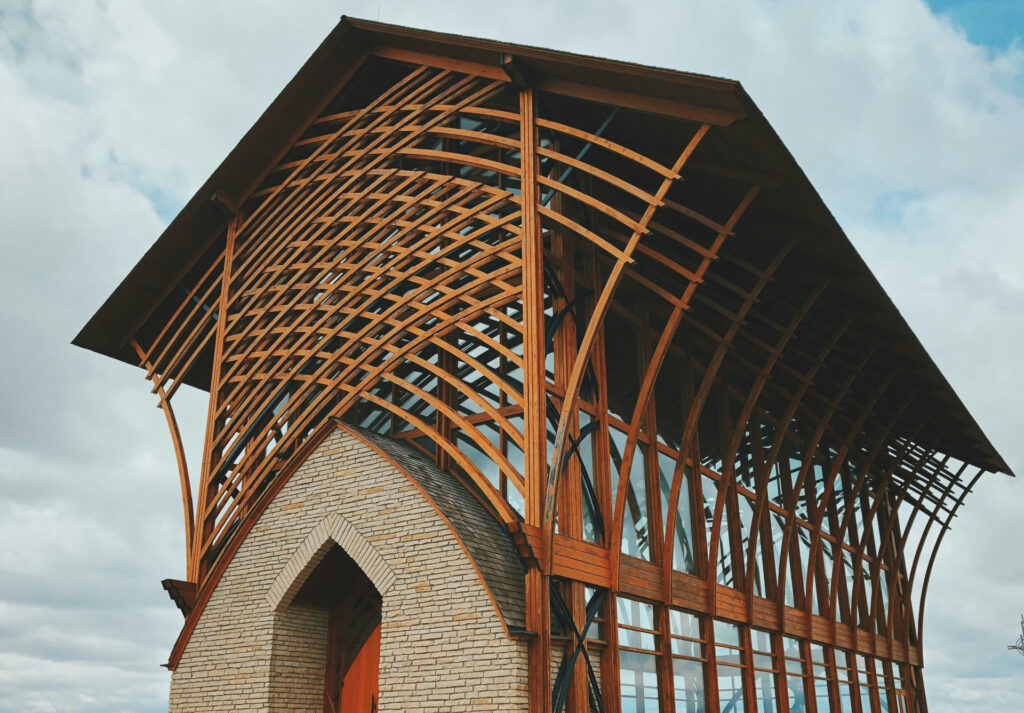
Frequently Asked Questions About Glulam
- Is glulam stronger than steel?
Not in absolute terms, but it does have a higher strength-to-weight ratio and can handle greater stresses in small sections. It is not stronger than steel per unit volume, but it competes well for many spans and structural applications.
- Is glulam better than wood?
Glulam is wood — engineered wood. Compared to solid sawn timber, glulam offers greater dimensional stability, design flexibility and structural consistency. It is better suited for long spans and curves. However, solid wood may still be preferable for simpler or smaller-scale use.
- Is glulam waterproof?
Glulam is not inherently waterproof and it must be protected from prolonged moisture exposure. However, manufacturers use adhesives that are water-resistant. With correct detailing, glulam can perform well outdoors.
- How long does glulam last?
With appropriate use, design and protection, glulam can last for many decades. Durability depends on moisture control, UV protection, quality of adhesives, and maintenance.
- Is glulam fireproof?
Like all wood, glulam is not fireproof. However, large glulam beams form a char layer that slows heat penetration and protects the inner core, maintaining load-bearing capacity.
Glulam as the Future of Sustainable Builds
When used thoughtfully, glulam uniquely bridges strong structural capability, renewable material credentials, carbon storage, design flexibility and efficient building. For those committed to sustainable construction — not just low carbon but eco-regenerative, human-centered design — glulam isn’t just an asset, it may fast become a cornerstone.

